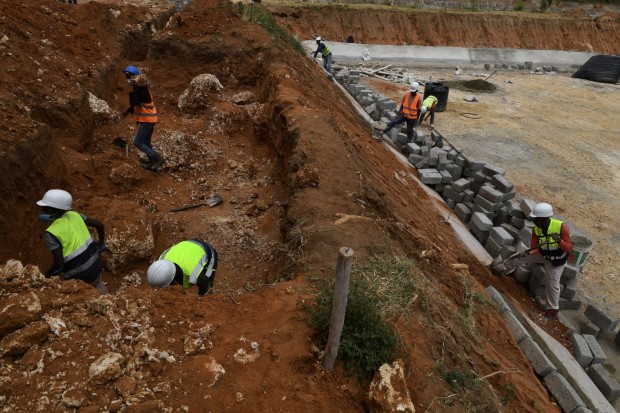Septic tanks prevent polluting the environment and underground water by separating particles from wastewater after dumping them. Discover the following trendy options on septic tank varieties for residential use.

(Photo : Getty Image/SIMON MAINA)
Chamber System
The chamber system illustrates a graveled method that uses recycled materials to reduce carbon footprint. Enhanced convenience in terms of transport and construction is the chamber system's key benefit. They are also well suited to regions with high groundwater tables, areas in which the volume of influent to the septic system is varied, regions in which gravel is limited, and places in which other technologies, such as plastic chambers, are widely available.
Mound Systems
Areas with shallow soil depth, high groundwater levels, or shallow bedrock are all potential locations for mound systems. The sand mound that was built has a drainfield trench within it. After passing through the septic tank, the effluent is sent to a pump chamber and delivered to the mound in the required amounts.
In discharging into the trench, the effluent undergoes treatment by passing through the sand and then dispersing into the soil native to the area. Moreover, although mound systems have the potential to be an effective solution for some soil conditions, they necessitate a significant amount of space and require regular care.
Conventional Anaerobic Septic System
One of the first components of a traditional residential septic system is a watertight underground septic tank. The household waste is collected in the tank, where the heavier solids are deposited at the bottom, and the oils are allowed to float to the top. After that, liquid waste, also known as effluent, is pushed into a network of distribution pipes that branch out and gradually release wastewater onto a region of land called a drain field.
Drain fields are deep underground trenches covered with gravel and sturdy fabric construction. As part of protecting the environment, these layers filter out toxins in conjunction with natural bacteria. Conventional septic systems are the most prevalent type installed in single-family dwellings, requiring only minor maintenance.
Also Read: Royal BAM Group Faces $16 Million Loss Due to Supply Chain Issues
Aerobic Treatment Unit
Among the many kinds of septic tanks, aerobic systems are one of several types that use alternate strategies to foster the growth of bacteria. Oxygenated air is pumped from this cylinder into the system through a pump of air. Accordingly, oxygen in the system promotes accelerated bacterial repopulation and enhanced performance, resulting in more efficient waste management than conventional septic tanks.
Drip Distribution System
Many drain fields also make use of the drip distribution system, which is often referred to as a pressure distribution system. The installation of this system needs a significant quantity of plumbing, although it causes significantly less disruption to a lawn than other systems. A pump chamber is utilized to facilitate water movement throughout the system.
Similar to a chamber system, the configuration of the sewer system is altered after the septic tank has been installed. In addition, the wastewater drip system is installed across a massive piping set to disseminate it so the soil can treat waste gently.
Constructed Wetland System
In a living area primarily based on wetland environments, this is one of the various septic system solutions available. This filter system, developed with a pea gravel filter system rather than a sand-focused one, is ideal for locations already significantly saturated with moisture.
The installation technique is quite similar to installing a filtration system for sand. Based on its ability to cooperate with the local water system to filter wastewater and make it safe to reuse, this system is ideal for wetland homes.
Related Article: Things to Consider When Determining the Cost of Installing a Septic Tank







